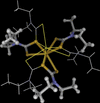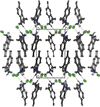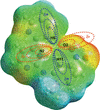issue contents
October 2021 issue

Cover illustration: The combination of thiourea or 1,3-dimethylthiourea with the common halogen-bond donors 1,2-, 1,3-, or 1,4-diiodotetrafluorobenzene, 1,3,5-trifluoro-2,4,6-triiodobenzene, and tetraiodoethylene provided several new halogen-bonding cocrystals, as well as three novel reaction products involving the I2-mediated oxidative formation of new C—S and C—N bonds. See Peloquin, Ragusa, McMillen & Pennington [Acta Cryst. (2021), C77, 599–609].
scientific commentaries
research papers


 access
access









 access
access





 access
access



 journal menu
journal menu




























